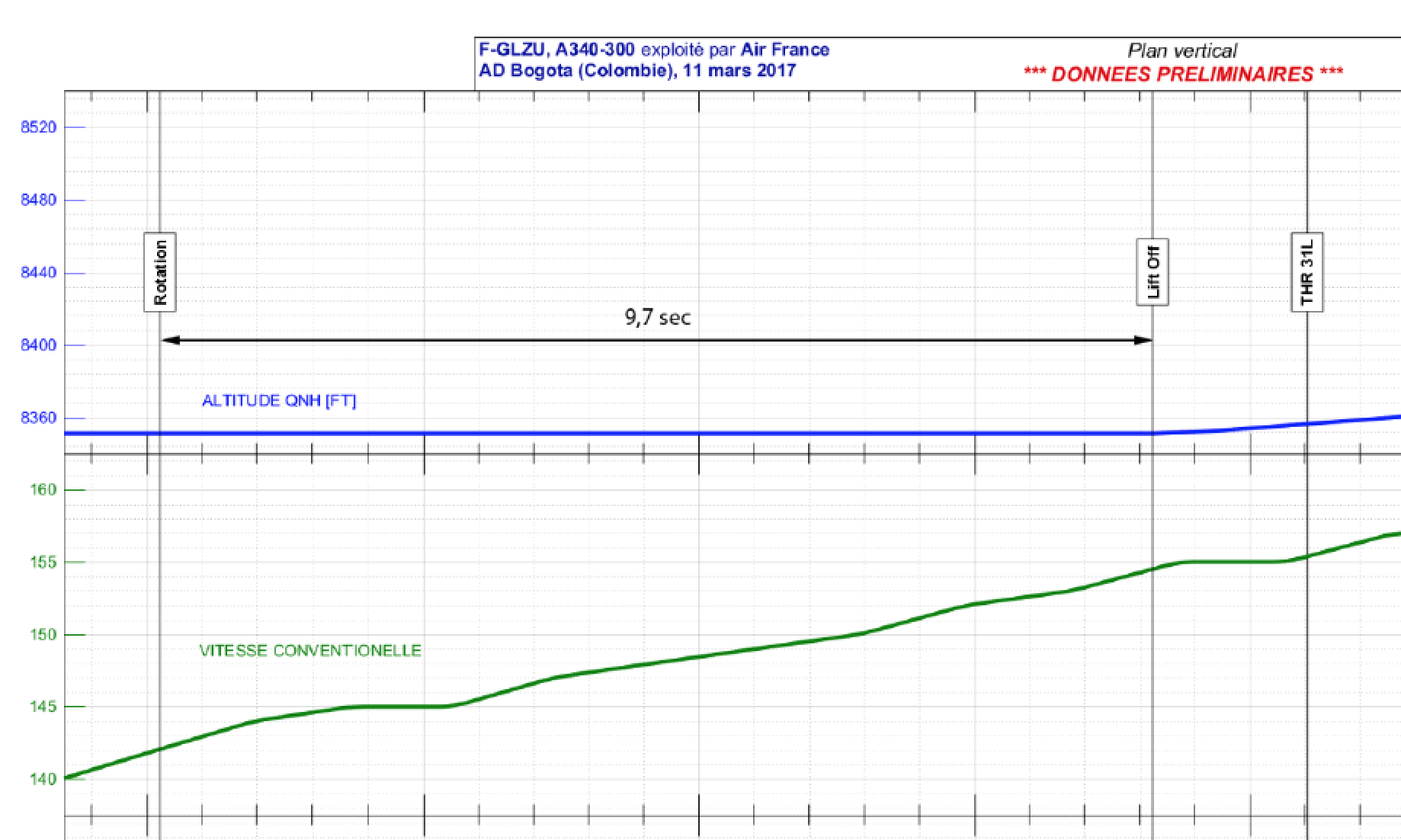Originally Posted by
wiedehopf
FDR:
I'm curious, why can't a slow rotation be a contributing factor of bad performance?
Especially with 4 engines and a limited amount of excess thrust.
Before rotation, lift induced drag is at a minimum but you have rolling friction.
After rotation rolling friction is eliminated.
So during rotation you have more drag, isn't that fair to say?
If you combine that with very limited excess thrust, wouldn't the acceleration be minimal during rotation?
So i could imagine that during rotation the aircraft isn't able to accelerate beyond a certain speed, or at least not effectively.
Thus you wouldn't gain almost any energy during rotation.
Maybe for thrust to be that limiting, it's already well below what is required, i don't know.
A very detailed graph of speed and acceleration during takeoff would sure be interesting.
Fair point.
TO an extent that is true, during the rotate itself, the down force from the tail results in an increased induced drag directly, and a slight increase in the weight on wheels over the time between rotate and liftoff. In the incident, on p78, the report gives the GS throughout the rotate, and it is a gentle curve, showing no abrupt loss of GS. The discussion of the report gives the rotate speed, and states the CAS that occurred at liftoff, and they indicate that acceleration continued throughout the rotate, so there is no massive reduction from the induced drag from the elevators, or the increased load x time for the gear rolling along the runway.
Consider the following. as far as TOR is concerned, the BEA report on p36 states that the AFM gives a distance of 3154m, vs the actual event requiring 3960m. 806m difference. The GS increases from 142 to 155kts, for an average (it was recorded as being a nearly linear regression) of 147.5kts, or about 75.9m/sec. liftoff took 9.7 sec after Vr, at a CAS of V2+9. The TOD of the AFM gave 3318m, which is about 800m margin for a limit takeoff, which is great, the event aircraft used up 4305m, 205m more than the TODA... to get to 35'. Without a failure.
The slow rotate doesn't result in any loss of speed gain, it continues throughout the event, but is not excessive, it is within normal targets by the time the plane gets to 35', the height just happens just under 1000m beyond where it would have been for the expected performance, and 200m approximately outside of the absolute limit of the engine out case. Traversing the excess 1000m that it took takes time, about 13 seconds, yet the rotate was only about 4-5 seconds longer than normal, and if speed had been building as a consequence of the shallow rotate, then the liftoff attitude would have been at a lower pitch and higher speed, but less than the error time to attain the normal rotate attitude. The time difference between the AFM and event rotates, equates to about 300-375m increase in distance, which leaves around 625-700m unaccounted for.... doing 75m/sec... is about 9 to 10 seconds of acceleration... at 2.5-3 m/sec average, as commented previously about a missing 25KIAS from some unknown cause. Wind shear? Nope, no change in CAS(TAS)v GS... temp? maybe... overweight? unlikely, unless they had some 5 tons of spare gas to lose enroute without comment.
A LH 333 did clip its tail out of KORD on 5 Mar 2013, having achieved an instantaneous pitch rate of 4.2 degrees/sec, Even with a rotate fast enough to whack the tail, at q3.5 degrees ANU, and with a speed increase in the snatch flare of 14KCAS. 333s way outperform the 343 at any time. Somewhere in between these rates is a nice medium, but the missing performance remains.
